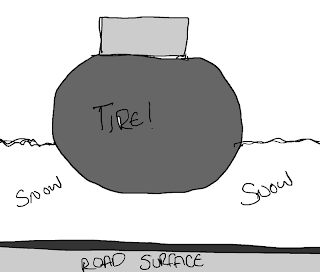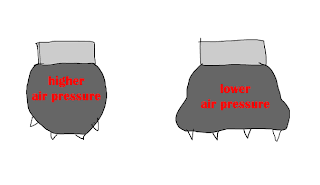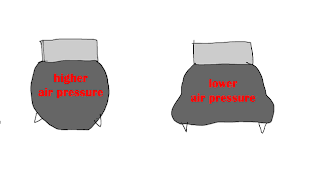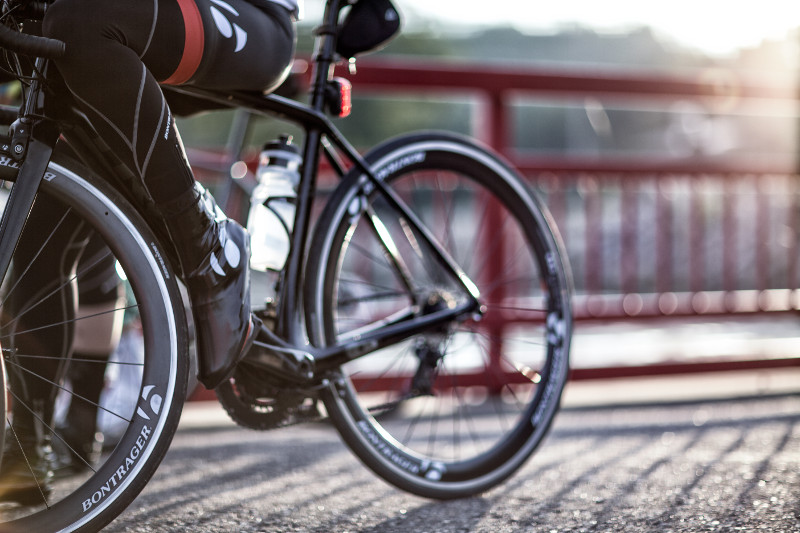Some people use them, some people don’t, and then there are the people who are curious about them, wondering what it would be like to have their own. The only way to know, is to try yourself. Until then, here is the low down on studded tires.
Winter time rolls around. And with it comes conditions that make cycling a bit more of a challenge. For the last 10 years I have used studded tires for winter commuting. Once temperatures plummet below freezing and stay there. The tires go on…
This is the winter of the CX commuter. Last year I rode a 29er with a rigid fork, and the years prior an old steel Stumpjumper with 26 inch wheels. I have been able to use wide Nokian’s 26 and 29 Gazza Extreme studded tires as well as the Nokian Hakkapelitta 700×40 240 studded tires.
| Many studded tires. 26, 29 and 700c with different tread patterns. |
They are much heavier than my usual set of tires. Depending on the size of the tire, and the amount of studs, you can expect the weight to go up 2 – 5 pounds. This year I added fenders and Nokian Hakkapelitta 700×40 240s to my bike, and it went up 5 pounds.
Also, this extra weight is all rotating mass. So it takes more to get the wheels going, and keep them moving. When you take them off in the spring and switch back to your regular tires you feel like a rocket. So expect a bit more effort to get around on them. Aside from weight, another draw back is that they make noise when there is no snow or ice on the pavement. I don’t mind this, some may, but I kind of dig the buzzing noise it makes. Helps me keep a consistent cadence as well.
Oh yes. And they cost many dollars. I have had one set of Nokian Gazza Extreme 26 x 294 studs last me 7 years and when I sold them they still had lots of life left. The studs are replaceable. You will need to replace some, anticipate losing a few each season. Studded tires range from $50 to $120 per tire, depending on the manufactures choice of materials used on the tire.
Now that we are past the “draw backs”, lets talk about the good stuff. Mainly, never ending up in a slushy ice puddle in the middle of traffic because of some black ice you didn’t see at night. I will endure the extra effort needed or slowing my pace for 1000X more control and grip on ice.* If you want a confidence builder for winter riding, slap a couple of these puppies on and ride across ice in the park. You can actually skid without ending up like Bambi. Not bruising up my butt all winter is worth more than all the before mentioned draw backs and then some. Not that everyone is racer, but when you take the tires off in the spring, you are a rocket. I dig it.
What type of tire you use is up to the riding you do, and the conditions you plan on riding in. The wider tires stay on top of snow better, but have much more rolling resistance and weight. Tires with deep knobs dig well in snow off road or when it gets really nasty on the road. There are tires with loads of studs, and tires with just a couple rows of studs. Your needs and wants dictate which ones are right for you.
| Which studded tire is right for you? |
Fatter tires will stay on top of more snow and ice, while the narrower tires tend to dig down to the road surface. For the deeper snow the bigger tire tends to work better, but also adds much more weight and rolling resistance. If you opt for the more robust tire, you will also need to make sure your bike frame can handle the added girth. For most people the narrower tires will be the way to go. Unless you are going off road, in which case wider tires with fatter knobs reign supreme.
And for those like me who learn best from images, here are some sweet pictures to help out.
 |
| Wider tires have more surface area and float a bit in the snow. |
 |
| Narrower tires dig right through the snow to the ground. |
Digging through to the slippery road surface is fine when you have studded tires. But when you don’t, you have more traction with a wider tire on snow, than a skinny tire on ice.
 |
| Tires with lots of studs at different air pressures. Always stud contact to the ground. |
We talked about tire size and how many studs you can handle. But do you really need them? That is up to you. I hear people talk smack about studded tires, but I say, to each their own, and don’t knock them ’til you’ve truly knocked them. I will keep rolling on mine and enjoy keeping the rubber side down all winter.
* 800% of scientists agree.




12 years ago
[…] While it is true that mountain bikes are generally a reliable source of traction, nothing beats a studded tire: Thick, rugged rubber tires laced with tiny metal studs. Not only will you have the best traction […]